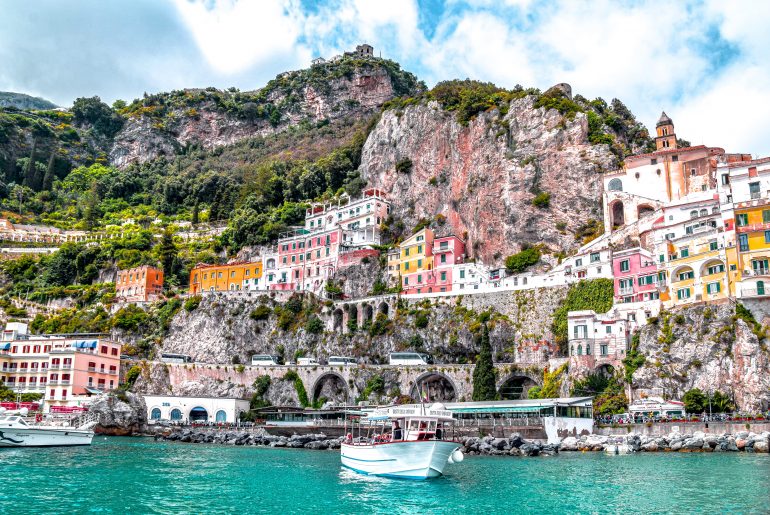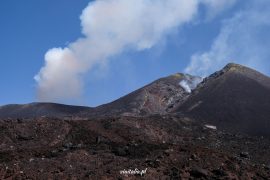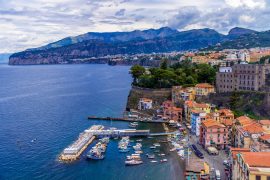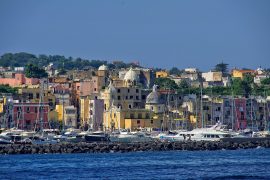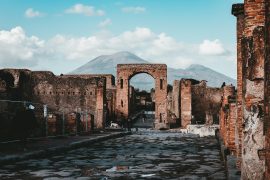One of the most recognizable regions The campaign is undoubtedly Amalfitan Coast - Its cascading buildings amidst the mountainous terrain adorn numerous postcards and tourist brochures promoting Italy. What is worth knowing when visiting this coast and which places deserve special attention?
Located on the Tyrrhenian Sea and the Gulf of Salerno, the coast is hidden from the world behind a terrace of picturesque green hills. Because of the terrain, the settlements that sprang up here had little opportunity to sprawl along, so residents adapted the technology of erecting more houses to the conditions. The result is a cascade of buildings that creep from the beach up to successive floors of green cover.
The Amalfi Coast is 40 km of charming coastline, along whose route are scattered coastal towns of centuries-old tradition. In 1997 it was honored with inclusion in the UNESCO World Heritage List, which only emphasizes that this is a corner that presents a global level with its attractiveness.
The coast stretches from the village of Vietri sul Mare, located at its eastern end, to the crowning western end of the city Positano. Most of the towns and settlements that make up the coast are located directly on the sea, but not all - some, such as Ravello and Scala developed some distance from the region's picturesque beaches.
The peculiarities of the Amalfitan Coast's terrain mean that getting around here is a bit different than in other areas italian resorts. There are not many roads here suitable for motorized traffic - in fact, at the disposal of vehicles here is mainly the SS163 road stretching along the coast, which guarantees, by the way, amazing views. There are two bus lines that run here, but one must take into account that they are able to take a limited number of passengers, which can be quite a problem for travelers during the holiday season.
For tourists in good physical condition, hiking may be the best way to explore the coast and move between surrounding towns. The region offers many scenically attractive trails, most of which have low tourist traffic and allow you to get to know the region much better than traveling by public transportation. Check out our guide to the Amalfi Coast!
Amalfi Coast: where to go and what to visit?
The attractions of the coast are mainly the picturesque towns and the beautiful, sweeping views from the surrounding hills. Amalfi itself is located in the central part of the coast and is a good base for neighboring towns on its eastern and western sides. For ease of orientation, we will start our description of local attractions from the western end of the coast, Positano.
Positano
This tourist town is one of the most popular coastal destinations. During the holiday season, it is very crowded and there are serious parking problems. Limited space means that there are simply not enough parking lots here for the number of tourists who flock here every year in July and August. When deciding to come to Positano during the high season, it's best to take the ferry or public transportation (assuming that the buses don't happen to be overcrowded). Tourists who already manage to get there will very quickly forget about the hardships of travel. The town is one of the most beautiful places in Campania. Its characteristic landscape looks even better in person than in photos. It is worth walking up Positano and finding a picturesque pub with a view of the sea and the city skyline - there are many such places here and they are a good opportunity to taste local specialties.
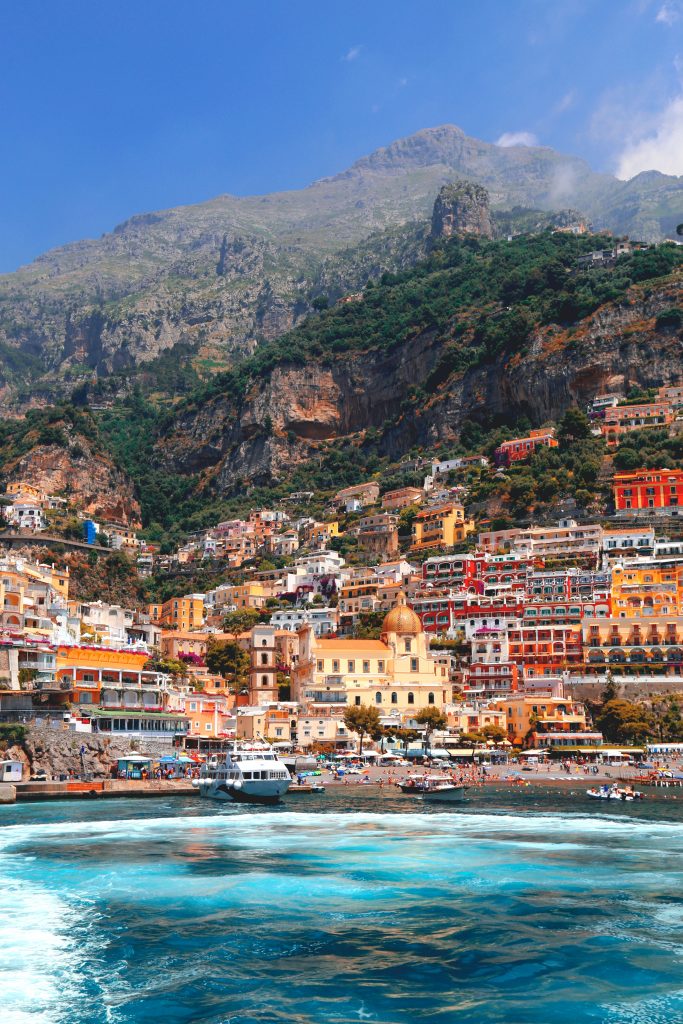
Lovers of Mediterranean sights should definitely visit the Chiesa di Santa Maria Assunta, i.e. local church, built on the site where a Roman villa once stood. There is an archaeological site here, and buying a guided tour allows you to learn in detail about the history of the place.
We have written in detail about Positano itself in a separate articlee.
Furore
About 10 km east of Positano is the tiny village of Furore, known primarily for its fjords, which are a distinctive feature of the local landscape. In the middle of this fairy-tale picture is a tiny beach with access to a cove with turquoise calm water. Furore has been hailed as the most beautiful village in Italy, even though architecturally it is not a compact whole - the residential buildings here are scattered at greater distances, and are not as prominent as those in Positano or Amalfi. However, the combination of these extraordinary natural features with the charm of a seaside settlement, richly decorated with wall paintings and frescoes, is so unique that it is difficult for even the richest resorts to compete with it. The very entrance to Furore is attractive, thanks to the bridge that connects two rocky ridges at this point and from which one can enjoy a unique view of the area.
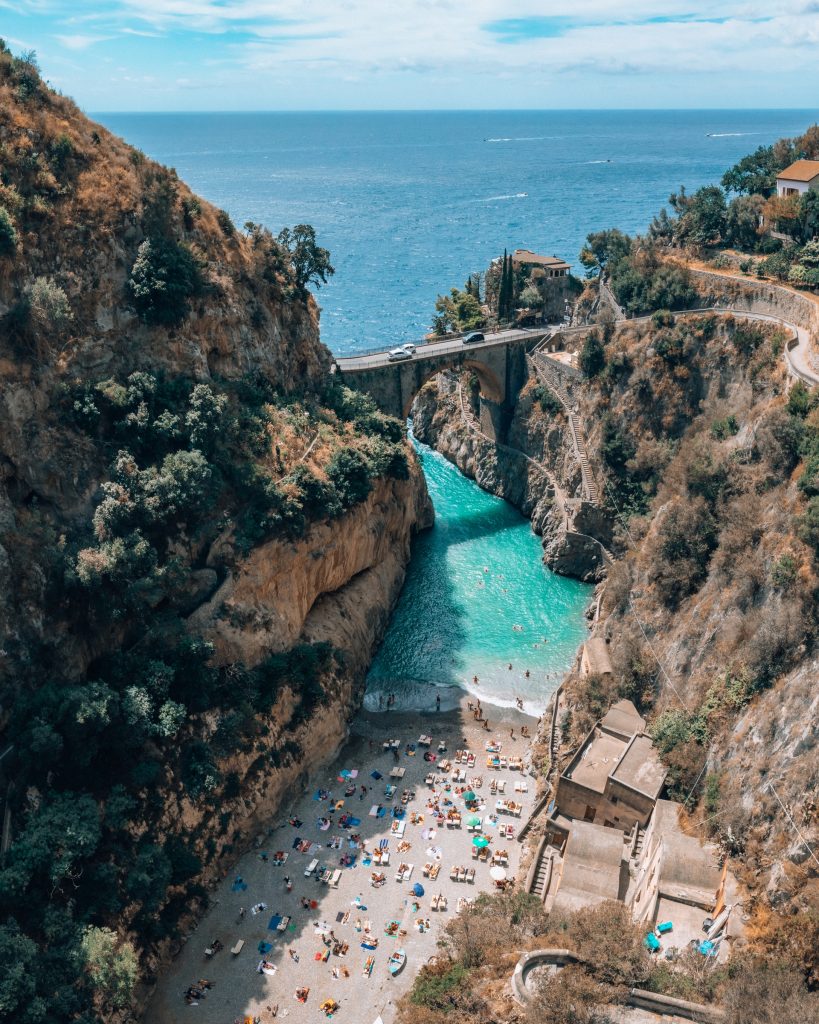
Furore is best visited by getting here by public transportation - this is because there is nowhere to park a car in the village, and it is forbidden to stop on the bridge itself, which makes it impossible to take at least a souvenir photo. Deciding to travel by bus, it is worth taking one of the first courses and not waiting until the last one due to the fact that the vehicle may already be overcrowded.
Conca dei Marini
Just a few kilometers east of Furore is another picturesque village - Conca dei Marini, known primarily for its tourist attraction - the emerald grotto. It is the second smallest village in Campania and that is its charm - very discreet, intimate and suitable for tourists looking for a secluded corner. Only a few hundred people live here, and the area itself - although part of one of Italy's most exclusive resorts - has retained something of a small fishing village.
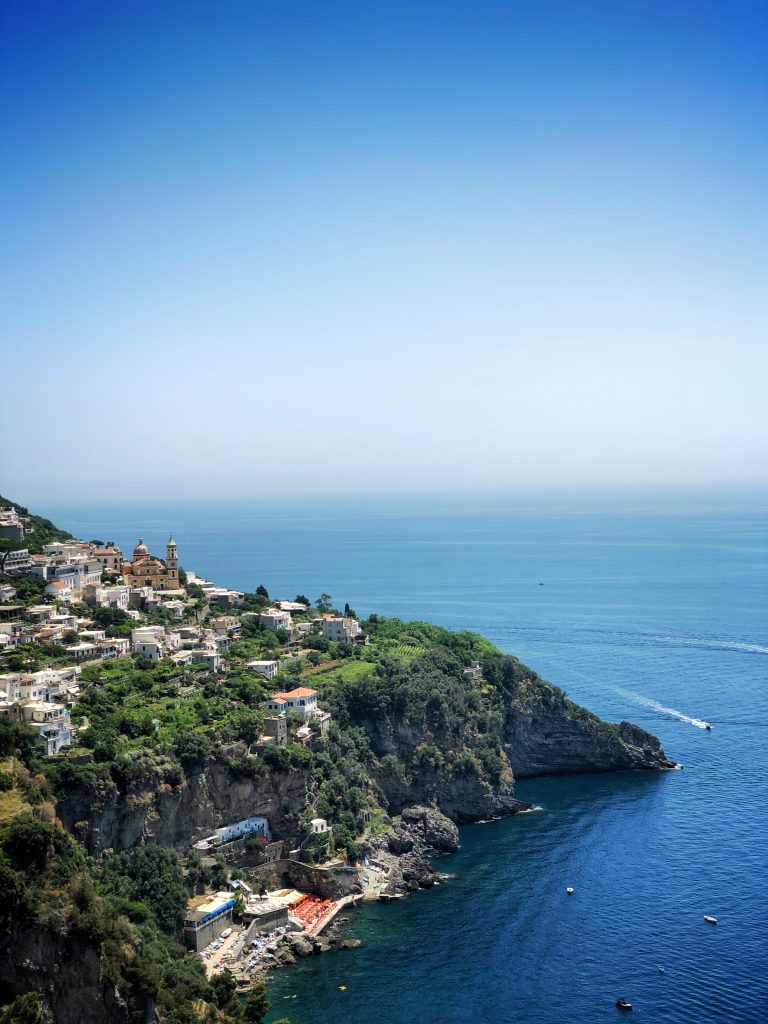
La Grotta dello Smeraldo, or Emerald Grotto, is a sea cave that was discovered in 1932 by a local fisherman. The special feature of this cave is the color of its interior, which resembles that of an emerald. The unusual play of light with the sea water makes it one of the most visited tourist attractions in the region. The grotto can be reached by boat from Amalfi or by steps leading down from the mountain. The grotto is open daily from 10 a.m. to 4 p.m. The cost of a ticket is €5.
Amalfi
The most famous town of the Amalfitan Coast, from which it takes its name, offers the region's characteristic views of cascades of dense buildings amidst lush countryside. The beaches are not the strongest point of the place - they are pebbly, with lots of small stones, and a busy road runs over much of the coast here. The most beautiful corners for beachcombing are reserved for hotels, which are very expensive in this town. But Amalfi, like the extremely crowded Positano, has its undeniable advantages. These are, first of all, the architectural qualities of the city, which allow you to better understand the history of the region and feel the real atmosphere of the area.
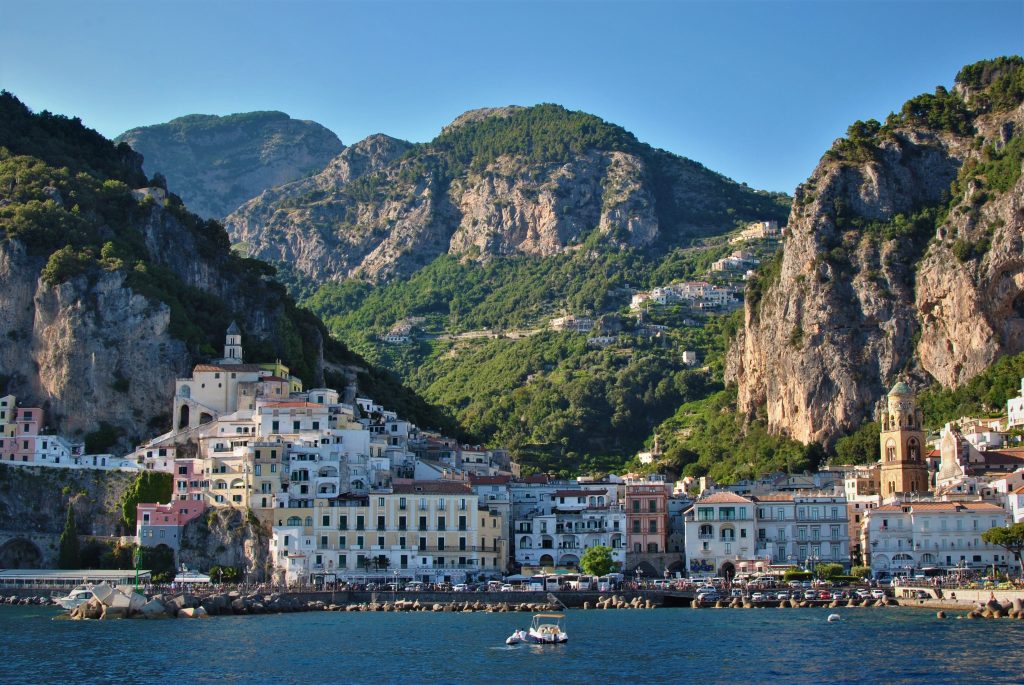
The square named Piazza del Duomo is the start of tours in many Italian cities and Amalfi is no exception. The main town square here is surrounded by charming townhouses, with a beautiful monumental fountain as its centerpiece. In this area you can find many local restaurants, serving regional specialties. Literally a few minutes' walk from the square is the Antico Arsenale della Repubblica di Amalfi, which is the city's maritime history museum. It is located in the old armory and contains numerous exhibits, among which you can find statues, various nautical-related items, as well as documents. The museum is open from Wednesday to Sunday, from 5 pm until late in the evening.
Less than a kilometer away is the Torre dello Ziro, which is a historic watchtower that offers a panoramic view of the coast. There is a path leading to the tower, which can be reached from the city. This monument is formally located within the Pontone settlement, but it is worth a visit during your stay in the resort capital. The fortress is a remnant of ancient architecture, specifically the walls of the former Grand Duchy of Amalfi. Torre dello Ziro is one of the better preserved witnesses of history in the region and makes a graceful subject for photos.
Scala and Ravello
While in the vicinity of the town of Amalfi, it is worth directing your steps inland to the towns of Scala and Ravello. The former is one of the places with less tourist traffic, which will appeal to those seeking an escape from the crowds, so characteristic of Amalfi resorts. Here you can come across examples of interesting architecture, such as the Cathedral of St. Lawrence and the Gothic crypt.
Ravello is a village located on a hill, at an altitude of about 365m above sea level. At many points in the town there are extensive views of the sea and parts of the coast. There are many medieval monuments in the town, such as religious buildings and estates. Ravello is also home to a famous music festival, held during the summer months. It has been held periodically since 1953 and was established to honor Richard Wagner, a prominent German composer.
Beaches on the Amalfi Coast
Contrary to appearances, beaches are not at all the best that the coast has to offer. The exceptions are private beaches belonging to luxury hotels - they can indeed be beautiful. The substrate of beaches in this region is rarely sandy, much more often it resembles gravel mixed with small stones. Due to the fact that the beaches are surrounded by cliffs and hills, a large part of the day is hidden in their shade. This is not an advantage for lovers of sunbathing and basking on a deck chair.
Wanting to enjoy beachcombing on the Amalfitan Coast, it is best to choose less popular resorts for this purpose. There will be far less crowding and a greater chance of finding a publicly accessible piece of beach.
How to get to the Amalfi Coast?
You can get to the coast by car, but due to the small number of parking lots and their astronomical prices, a much better way is to get here by public transportation. The fastest way to get from Poland to Campania will, of course, be by plane. A direct flight from Krakow to Naples is offered by Ryanair, and the ticket price is about PLN 300 one way. If you book the flight well in advance, the price will be lower. Another low-cost airline - Wizzair - flies from Warsaw to Naples. The cost of a one-way ticket is about PLN 100.
From Naples we can get to Vietri sul Mare, the eastern end of the Amalfi Coast, by train. The course is with a change in Salerno, the train trip takes about an hour, and the cost of a ticket starts at €4.70. Between the various cities of the coast it is most convenient to travel by ferry - this form of transport allows you to bypass traffic jams, and is generally not associated with large queues.
Weather on the Amalfi Coast. When to go.
The best weather on the coast is from May to October - the maximum temperature then is above 20ºC, and the minimum temperature remains above 10ºC. The least amount of precipitation is recorded here from April to September, with the most in October, November and December. July and August are the months with the highest temperatures and at the same time the lowest rainfall, but due to the peak tourist season they are not recommended as the best time to visit the Amalfi Coast. It is definitely better to choose June or September for a vacation here, when it is still warm and sunny, but less crowded.
Cuisine on the Amalfi Coast
Classic dishes from the region include. Spaghetti alla Positano, which is spaghetti pasta with tomato sauce, topped with pork sausage, zucchini and garlic. Another regional dish is Moscardini con le Patate. The main ingredient of this dish is cooked octopus in a sauce of tomatoes, garlic and white wine, served with potatoes.
Due to its proximity to Naples, the traditional neapolitan pizza, baked at a very high temperature, on extremely thin dough. In towns along the coast there are many pubs that serve this specialty.
Accommodation on the Amalfi Coast
Amalfi and its surroundings are definitely some of the more expensive places in Italy. Wanting to spend vacations In the first half of June on the Amalfitan Coast, you have to get ready to spend a minimum of €45 per night for a room - this is definitely a budget option involving accommodation in private quarters away from the coastline. The Tramonti and Ageroli areas are the cheapest. However, if you want to stay in a four-star hotel with a sea view, you have to expect to spend a minimum of €140 per night in a double room. In August, a night in a similar establishment is already a cost of 150€ upwards per room.
Check out the map with the cheapest accommodations on the Amalfi Coast on Bookings:
Booking.com
